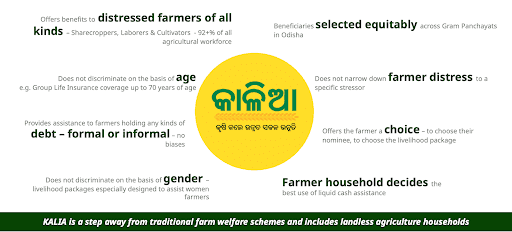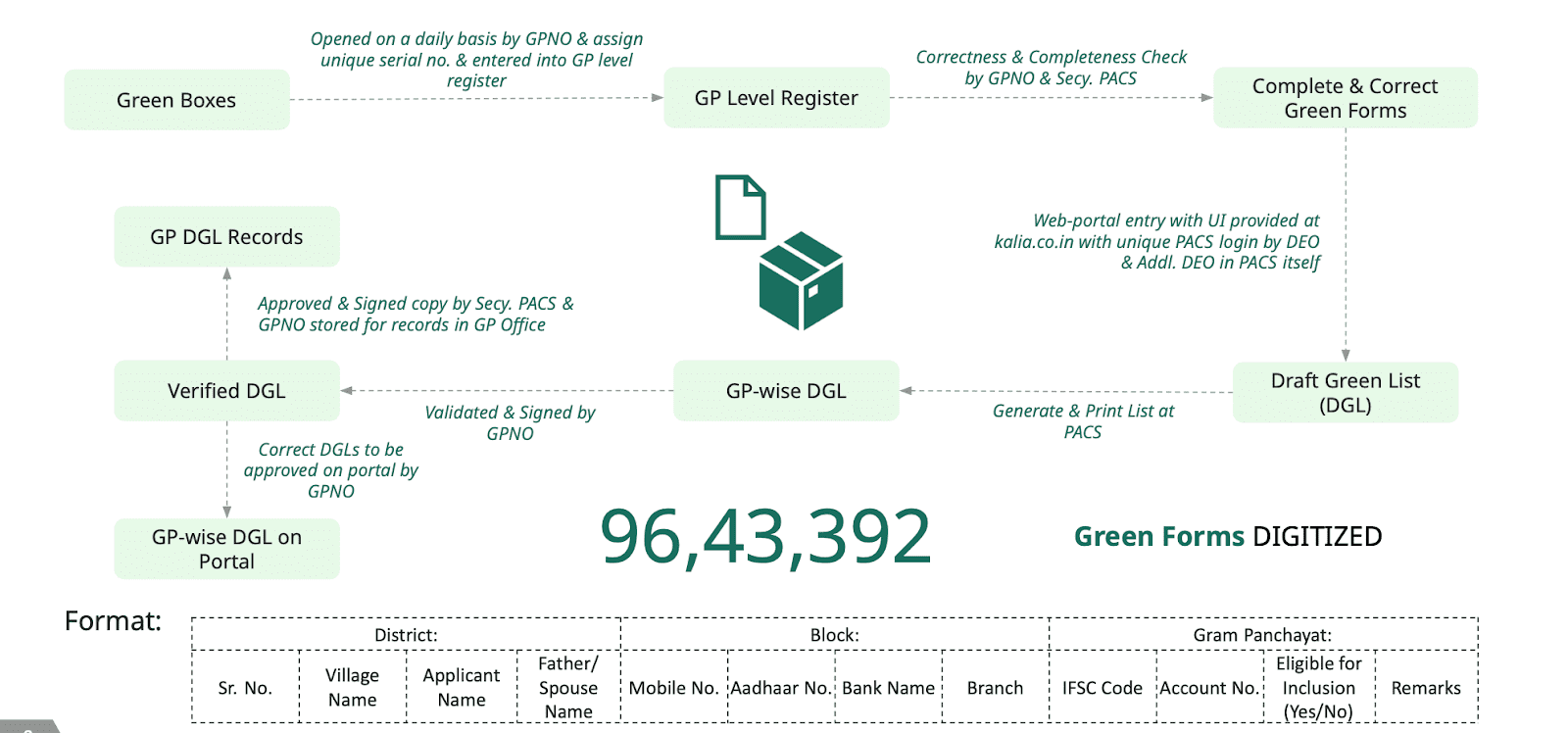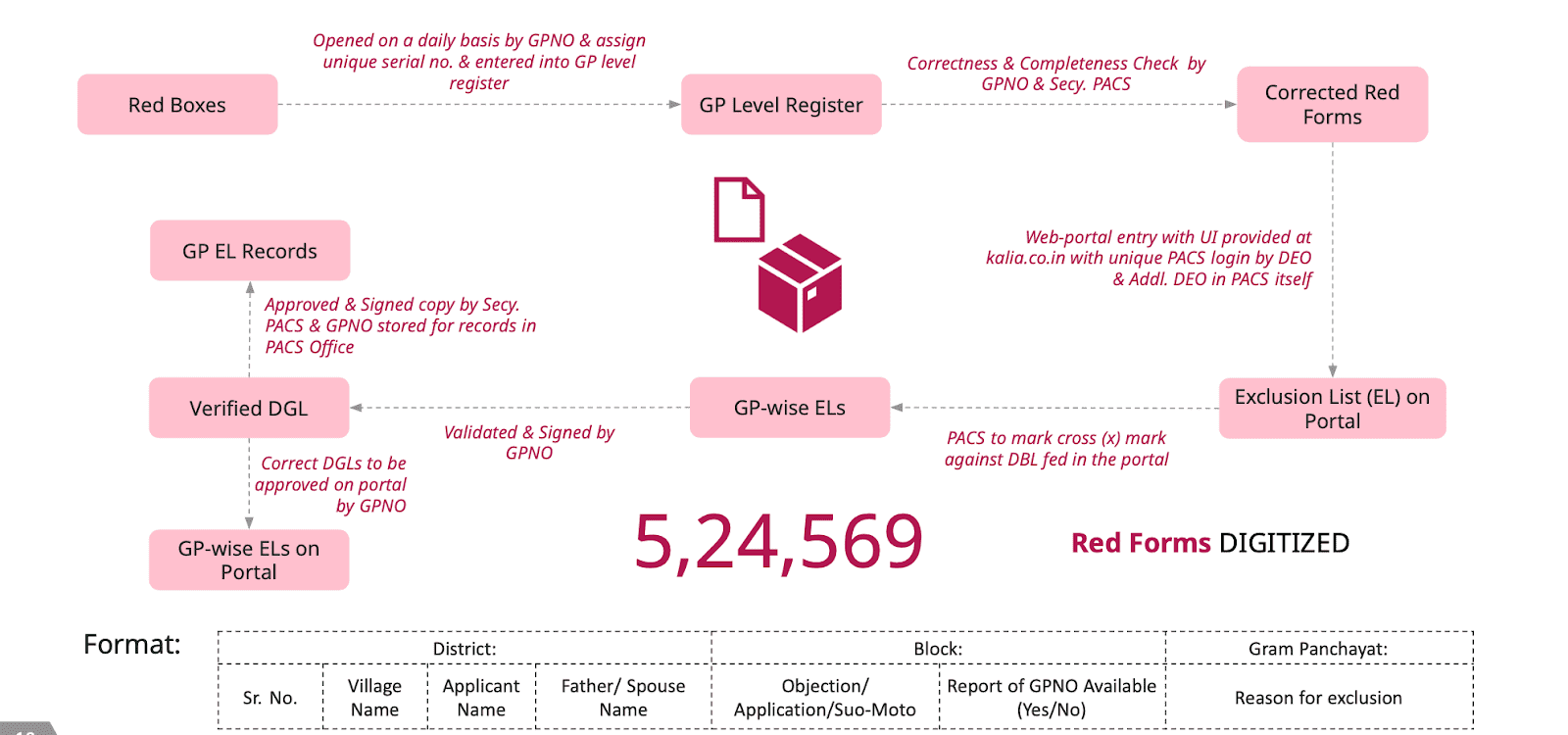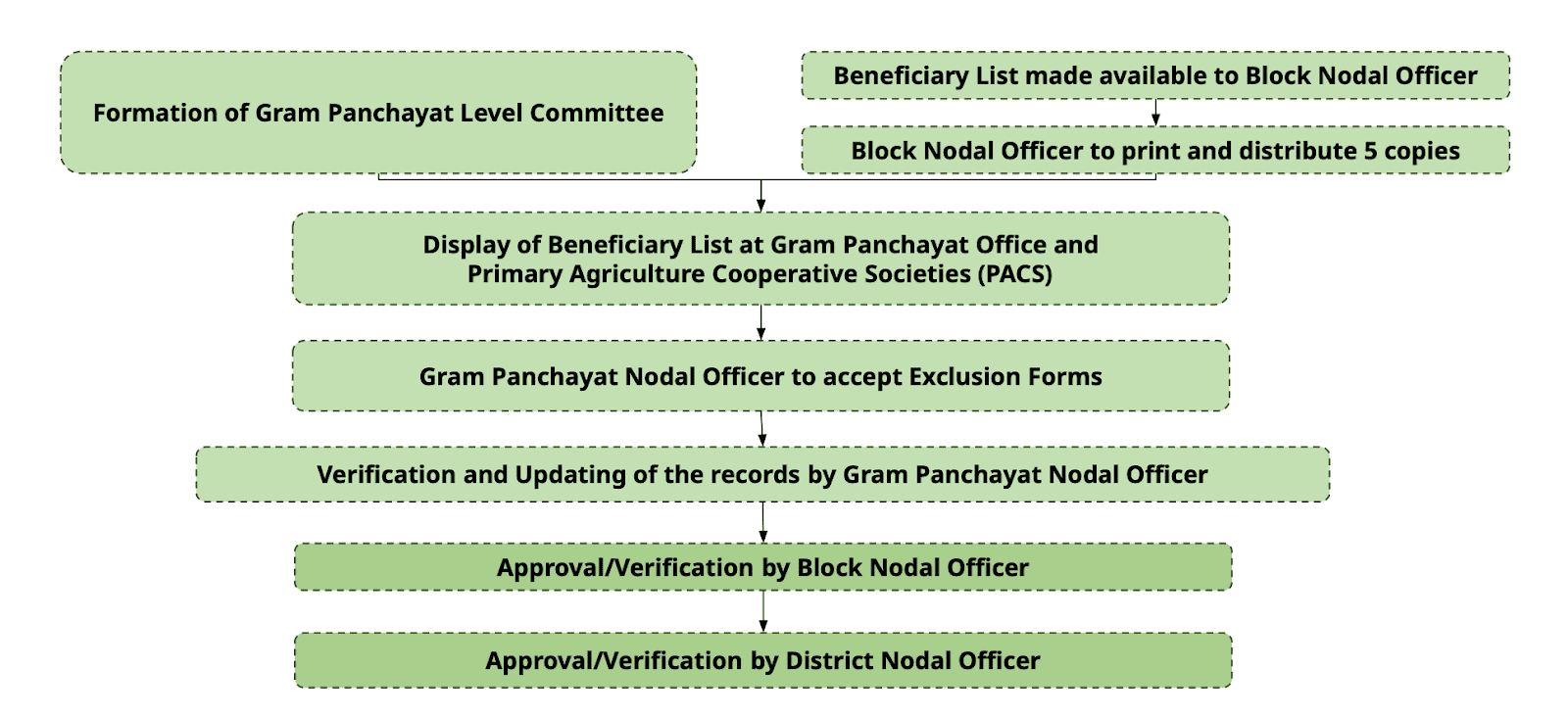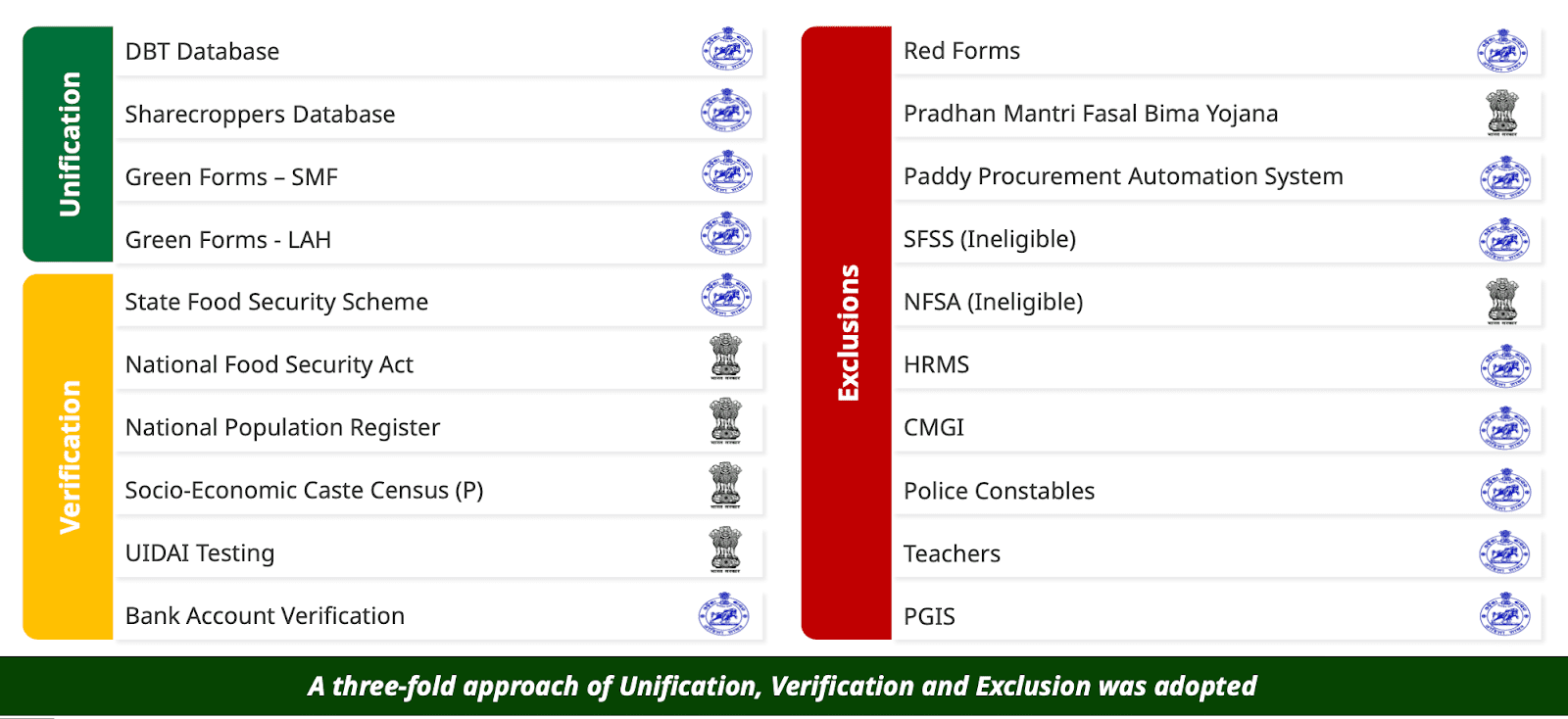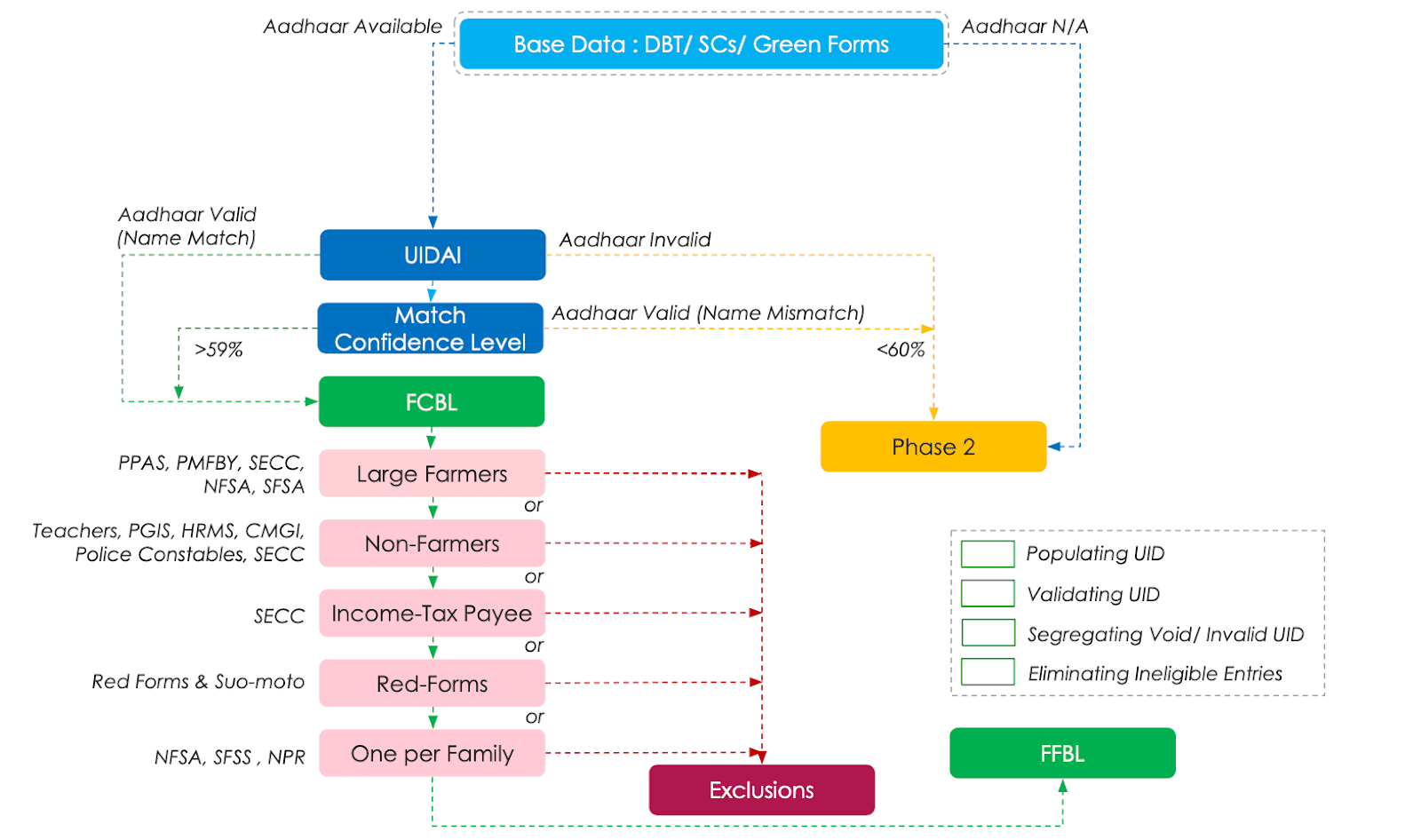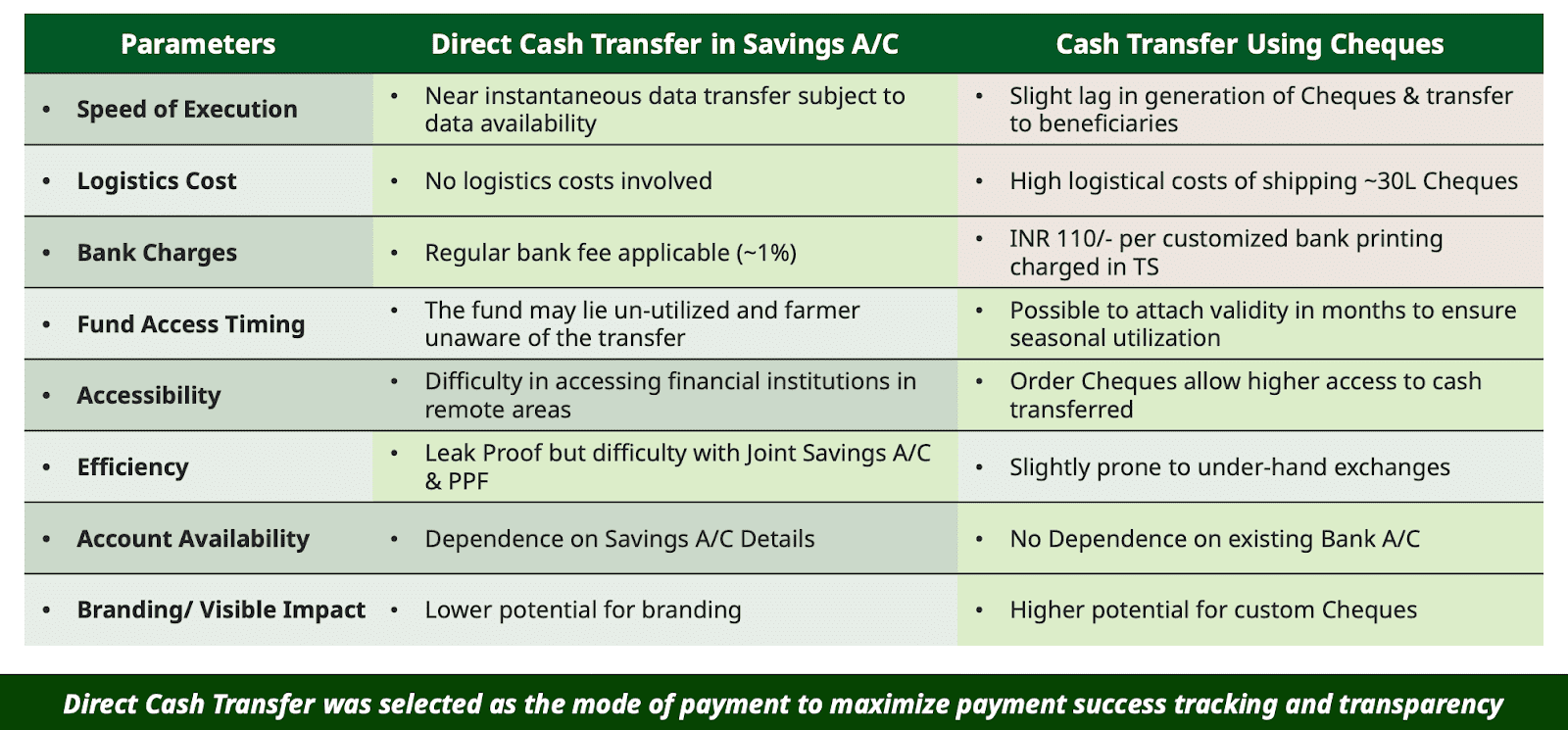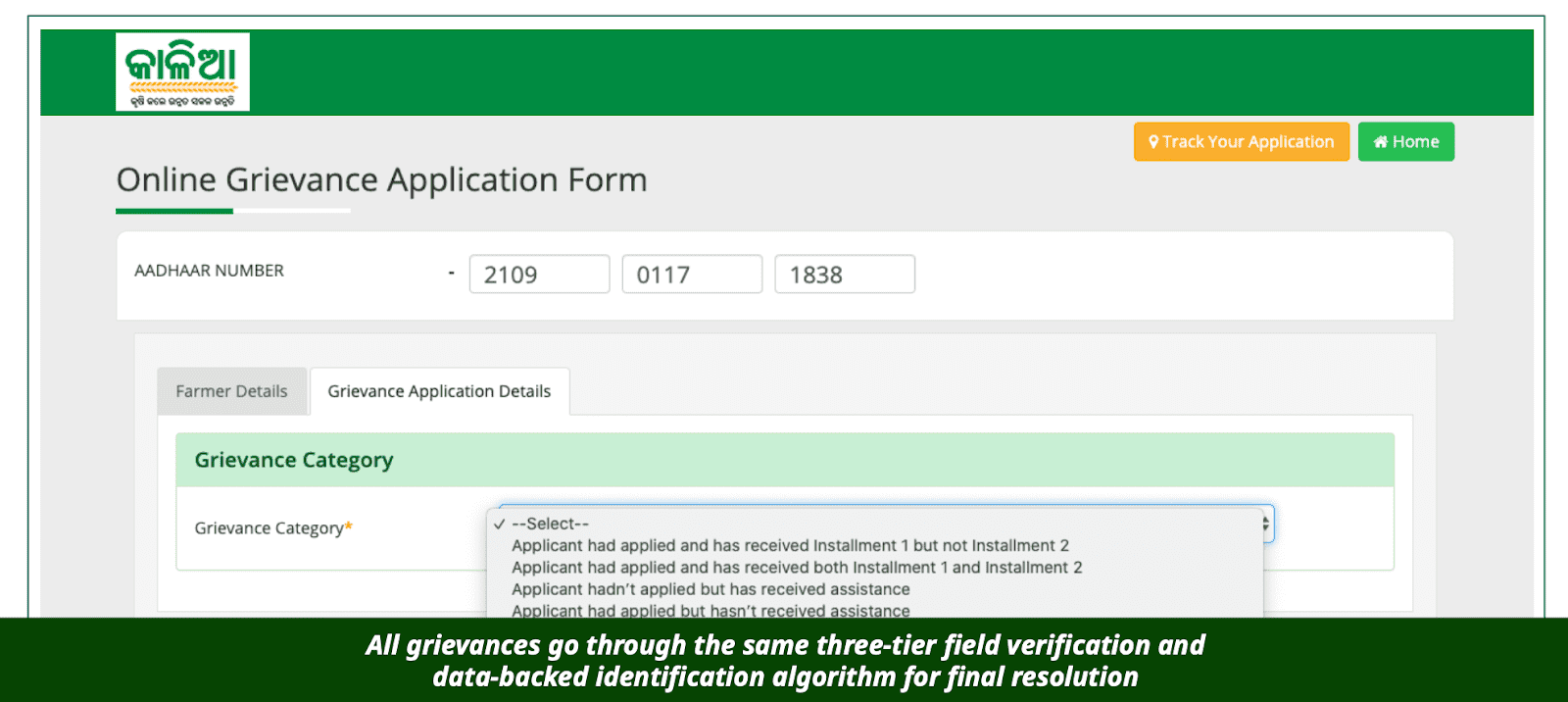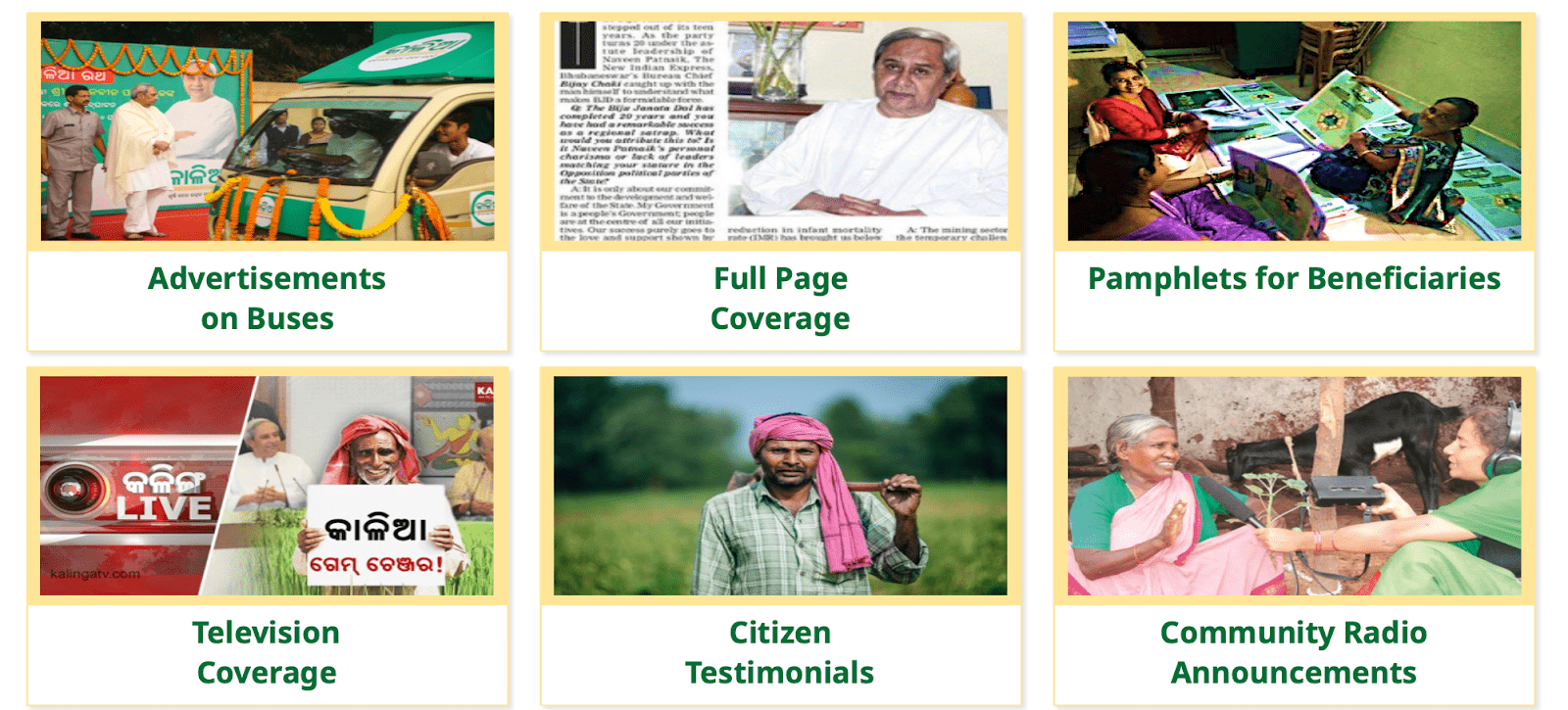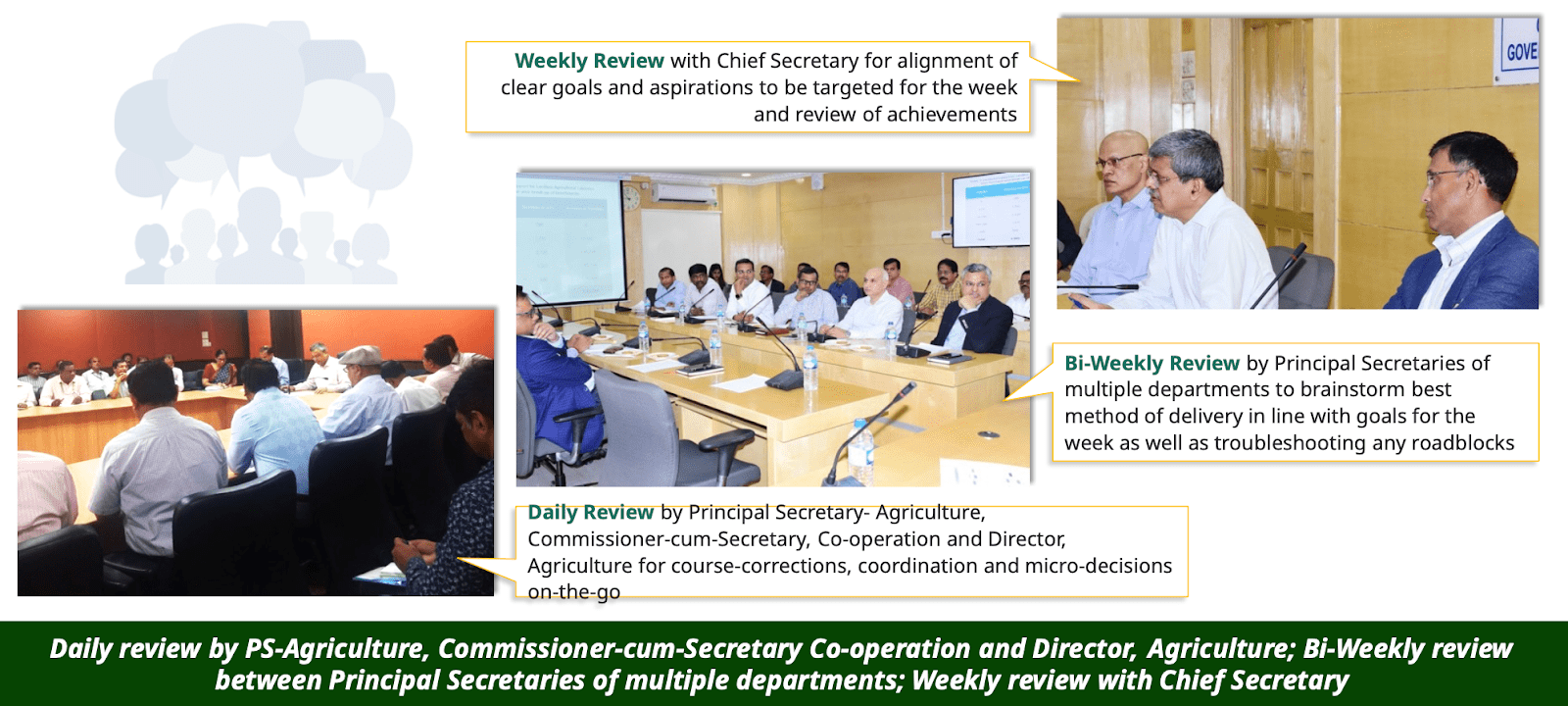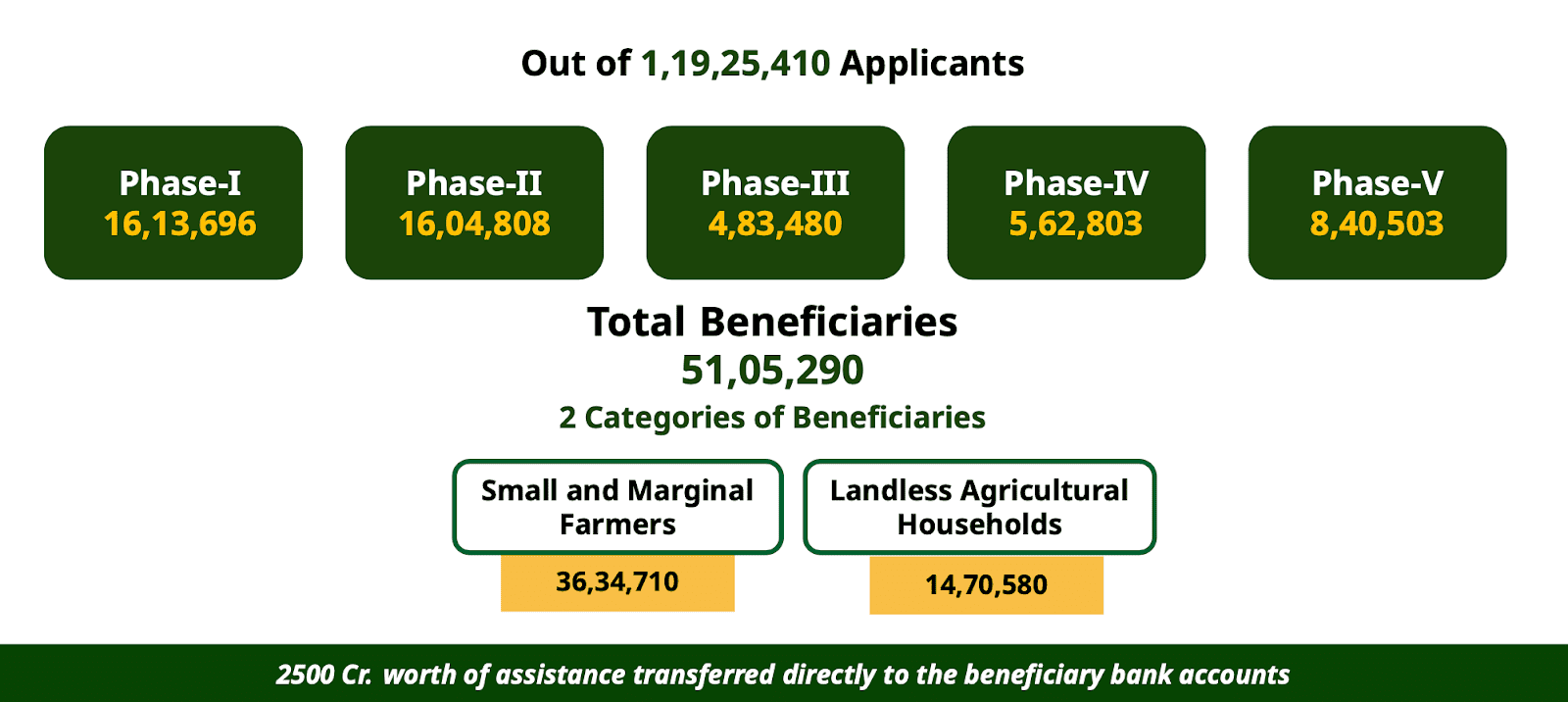In a state where nearly 80% of the population depends on agriculture, Odisha has long faced significant challenges in delivering effective welfare to its rural communities. Recognizing the limitations of traditional approaches, such as broad-based loan waivers and fragmented welfare efforts, the Government of Odisha— in collaboration with Samagra—set out to modernize the delivery of financial support to farmers and landless agricultural laborers. The resulting KALIA initiative, short for Krushak Assistance for Livelihood and Income Augmentation, is a model of direct, data-driven, and inclusive support designed to enhance transparency and efficiency in public service delivery.
Challenge
Odisha’s agricultural sector encountered several persistent issues that necessitated a new approach. Key challenges included:
- Exclusion of Vulnerable Groups:
Traditional support measures failed to reach landless laborers, sharecroppers, and smallholder farmers, leaving a large segment of the rural population without proper assistance. - Lack of a Unified Database:
The absence of a reliable, consolidated farmer database led to inefficiencies in identifying eligible beneficiaries, resulting in the inadvertent exclusion of many deserving individuals. - Reliance on Informal Credit Systems:
The dependence on informal sources of credit created cycles of debt among small and marginal farmers, compounding their financial vulnerability.
Solution Design
The design of the KALIA scheme was as innovative as it was comprehensive. Built upon a foundation of data-driven governance and technological integration, the scheme was designed to ensure that every step—from the identification of beneficiaries to the final disbursement of funds—was executed with accountability. Below, we double-click into the multi-layered components of the solution design, offering a detailed look at the mechanisms and nuances that have made KALIA a significant part of Odisha’s vision of agrarian welfare.
Beneficiary Identification and Verification
At the heart of KALIA lies the challenge of identifying the eligible beneficiaries in a state with lakhs of potential claimants. Traditional methods relied on outdated lists and manual verification that left gaps and errors. To address this, the scheme introduced an innovative approach:
Green Forms and Red Forms:
The process began with the rollout of Green Forms, a self-nomination mechanism through which farmers could enroll themselves as eligible for the scheme. In a display of scale and efficiency, over 96 lakh green forms were digitized, providing a real-time snapshot of potential beneficiaries across rural Odisha. Complementing this was the introduction of Red Forms, which allowed individuals who were not eligible—due to factors such as being large farmers, government employees, or urban applicants—to voluntarily remove their names from the list. This dual-form strategy ensured that the database was not only comprehensive, targeting the segments of the population that the welfare scheme intended to serve.
Multi-Tier Verification Process:
To further enhance the integrity of the beneficiary list, KALIA implemented a robust three-tier verification mechanism. This process unfolded in three strategic layers:
- Gram Panchayat Level: Local Panchayat officers began by verifying and entering the green and red form data. Each form was scrutinized, and a unique serial number was assigned. The on-ground teams maintained registers that were subsequently digitized, ensuring that local records were both accurate and accessible.
- Block Level: The process then moved to a broader scrutiny at the Block level, where designated nodal officers re-verified the data submitted by the Gram Panchayats. This redundant layer of verification was critical in eliminating duplications and potential errors.
- District Level: Finally, at the District level, the data underwent a final round of validation before being fed into the central KALIA database. This hierarchical method of verification ensured that only truly eligible farmers and agricultural laborers were captured in the scheme’s records.
Integration of Multiple Government Databases:
A pivotal element that set KALIA apart was its ability to integrate data from over 20 government databases. These databases, including Aadhaar, land records, bank account verifications, teacher and police records, among others, were unified to create a comprehensive and reliable farmer database. The data unification process involved a meticulous cross-referencing of records to match entries even when discrepancies—such as differences in name spellings, inconsistent reporting of exclusion criteria fields—were present. This integration not only streamlined the beneficiary identification process but also played a key role in excluding ineligible applicants, such as government employees or high-income tax payees, thereby minimizing the risk of funds being misallocated.
Direct Benefit Transfer (DBT) – A Paradigm Shift in Disbursal
Once the beneficiaries were accurately identified, the next critical component of the KALIA scheme was to ensure that financial support reached them directly, swiftly, and securely. Moving away from the established cheque-based systems, which were slow and prone to errors, KALIA adopted the Direct Benefit Transfer (DBT) model..
Streamlined Fund Transfer Process:
Under the DBT system, funds were transferred directly into the bank accounts of the verified beneficiaries. This model eliminated the need for intermediaries, drastically reducing administrative burdens and logistical complexities. Beneficiaries experienced a significant reduction in the delay of receiving funds, a critical improvement during periods of financial stress.
Technological Integration:
The DBT model was underpinned by a robust technological infrastructure. SBI’s Cash Management Portal ensured real-time verification for each transaction, incorporating backend sanitization checks—such as confirming the IFSC code lengths against RBI’s master list—to maintain accuracy. Test transactions were performed to validate each beneficiary’s bank details, thereby reducing the likelihood of errors during bulk transfers. This system also created a digital audit trail that reinforced accountability throughout the process.
Cost and Time Efficiency:
The direct transfer model significantly reduced the costs associated with traditional cheque-based systems by eliminating the need for printing, transporting, and distributing cheques. The efficiency gains meant that a larger portion of the allocated funds was channeled directly to the beneficiaries, optimizing the overall impact of the scheme.
Grievance Redressal – Ensuring No One Is Left Behind
Acknowledging that any large-scale welfare initiative may encounter operational challenges, the KALIA scheme incorporated a comprehensive grievance redressal system designed to promptly address beneficiary concerns.
The KALIA Portal:
At the center of this mechanism was the KALIA Portal, a dedicated platform serving as the primary entry point for registering grievances. Beneficiaries could report issues related to incorrect data, payment delays, or other discrepancies directly through the portal. The platform was designed to be accessible, even to users with limited digital proficiency.
Multi-Tier Resolution Process:
Mirroring the beneficiary verification process, the grievance redressal system was organized into a multi-tier framework. Complaints were first addressed at the Gram Panchayat level and, if necessary, escalated to the Block and District levels for further review. This structured approach ensured that issues received thorough attention and were resolved in a timely manner.
Transparency and Accountability:
Every step in the grievance resolution process was systematically logged and monitored. Beneficiaries could track their complaints through the portal, promoting transparency and instilling confidence in the system. Regular review meetings were held at various levels of government, including daily, bi-weekly, and weekly reviews with appropriate authorities, to discuss progress and address any persistent issues.
Information, Education, and Communication (IEC) – Bridging the Awareness Gap
Effective communication is critical to the success of any public initiative. For KALIA, an extensive IEC campaign was launched to ensure that all eligible farmers understood both the benefits of the scheme and the methods to access them.
Diverse Media Outreach:
The IEC strategy incorporated a mix of traditional and digital media channels to reach a broad audience. Advertisements on public transport served as mobile announcements, while full-page advertisements in leading newspapers conveyed detailed information about the scheme. In addition, community radio programs and television spots were instrumental in informing farmers who might not regularly access print or online media.
Community Engagement Through Mega Events:
Large-scale public events were organized to mark key milestones in the implementation of KALIA. These events featured live demonstrations of the fund disbursal process, beneficiary testimonials, and discussions led by government officials. Such events not only bolstered public confidence in the system but also provided a platform for resolving doubts and encouraging wider participation.
Empowering Local Institutions:
To ensure effective dissemination of information at the grassroots level, local government bodies and Panchayats received targeted training. These sessions were designed to equip local administrators with the necessary skills to guide beneficiaries through the application and verification process, thereby reinforcing the overall effectiveness of the IEC campaign.
Coordinated Oversight and Continuous Process Improvement
Beyond the technological and communication components, KALIA’s operational framework included coordinated oversight and a system for continuous process improvement.
Real-Time Monitoring and Coordination:
The initiative leveraged real-time data monitoring systems to track the progression of green and red form entries, fund transfers, and grievance resolutions. Dedicated communication channels, such as WhatsApp groups among officials, enabled rapid troubleshooting and immediate sharing of information. This real-time coordination was critical in managing the large volume of data and ensuring that administrative issues were swiftly resolved.
Structured Reviews:
KALIA’s operations were subject to a robust review mechanism. Daily reviews at the local level helped address immediate operational challenges, while bi-weekly and weekly reviews at block, district and state levels provided strategic oversight. State reviews involved senior officials, including the Principal Secretary of Agriculture and other key decision-makers, thereby ensuring that all aspects of the scheme were running as intended and timely de-bottlenecking could be done.
Training and Capacity Building:
Recognizing that an effective system is supported by knowledgeable personnel, comprehensive training programs were implemented for all master trainers and field officials. These programs covered the technical aspects of the DBT system, field verification protocols, and customer service best practices. This focus on capacity building helped to create a reliable human infrastructure essential for the successful implementation of the KALIA initiative.
The Integrated Approach: A Confluence of Technology, Process, and Empathy
The KALIA scheme distinguishes itself through its holistic and integrated approach. By combining advanced technology with rigorous process design and extensive community outreach, the initiative has created a streamlined, efficient system for delivering welfare support. The integration of multiple government databases allowed for precise beneficiary targeting, while the DBT model ensured prompt fund transfers. The multi-tier verification and grievance redressal mechanisms provided an additional layer of accountability and transparency, reinforcing the trust of stakeholders at every level.
Furthermore, the extensive IEC campaign played a crucial role in bridging the awareness gap, ensuring that even remote communities were well-informed about the scheme’s processes and benefits. The result is a comprehensive public service model that effectively addresses the challenges of traditional welfare systems, sets new standards for transparency, and demonstrates a replicable blueprint for modern governance.
Impact
Within five months of its launch, the KALIA initiative disbursed over ₹2,500 crores directly to the bank accounts of approximately 51 lakh farmers. The efficiency gains attributed to the DBT system and the rigorous verification processes were evident in these results. Data indicates that more than 96 lakh green forms and over 5 lakh red forms were processed accurately, ensuring that the financial support reached the intended beneficiaries.
An important aspect of the scheme’s design is its commitment to inclusivity. With 31% of the beneficiaries being women, KALIA has played a key role in broadening the reach of welfare benefits across gender lines. The unified farmer database, reinforced by real-time API linkages among various government departments, has enhanced overall transparency and accountability in fund disbursal.
The impact of KALIA also reflects Samagra’s broader vision of driving systemic change in public service delivery. By integrating technology and data with on-ground operational excellence, the initiative has set a benchmark for improving the efficiency of welfare schemes. The lessons derived from this intervention offer valuable insights for similar endeavors in other states and sectors, demonstrating that data-driven, inclusive governance can yield measurable improvements in public welfare outcomes.

